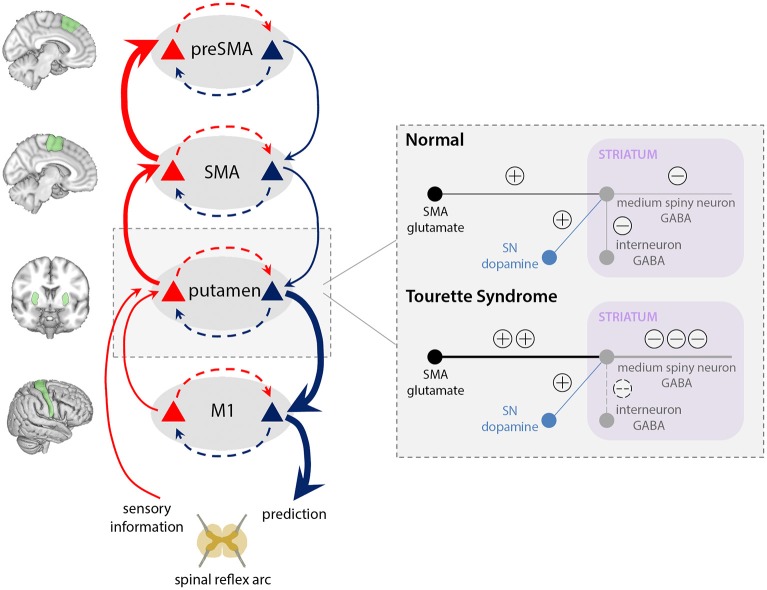Figure 4.
Aberrant integration of cortical inputs within the striatum in TS. Typically, glutamatergic inputs to the basal ganglia direct pathway are regulated by inhibitory interneurons within the striatum, and modulated according to dopamine release by the substantia nigra (SN). In our model of TS, increased cortical signalling from the SMA, combined with reduced regulation of the direct pathway by inhibitory interneurons, leads to increased excitation of the medium spiny striatal output neurons, which results in greater thalamic disinhibition and release of signals for movement to M1. Thus, a tic is generated, leading to ascending prediction error signals from putamen (bold red arrows) for a movement that was not predicted within preSMA, and which is “explained away” as an “unvoluntary” action.

